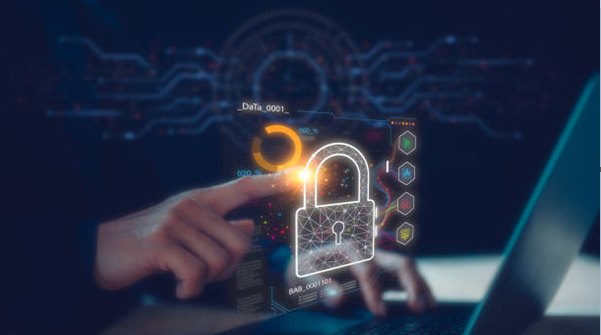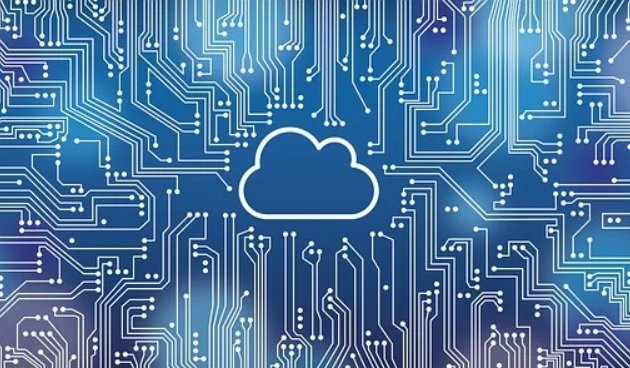What Is CIA Triad in Cybersecurity? Definition & Importance

Credit - Pixabay
The CIA Triad in cybersecurity focuses on three things: keeping data private, making sure it's reliable, and ensuring it's always accessible. It's important for protecting information, preventing tampering, and making sure systems work when needed. This model helps find weaknesses in security and improve defenses against cyber threats.
What is the CIA Triad?
There are three letters in the "CIA Triad." The full form of CIA is - C for Confidentiality, I for Integrity, and A for Availability. So, the CIA Triad is a general model for the development of security systems. Mostly we use the CIA to find vulnerabilities and make solutions. As you know, confidentiality, integrity, and availability are full forms of CIA. These are critical for any operating business. The CIA Trio is divided into three main considering focal points. This division is helpful for security teams to point out the different ways to address every concern. When all three standards are met, the security of organizations will be better protected and stronger against threats.
Also Read -
Confidentiality
To ensure that data is secret and private, organizations try to ensure privacy because organizations know that access to this information and data must be prevented from unauthorized activity. There is topmost component of maintaining privacy is that you should prevent your data from any type of unauthorized access because it becomes more critical for your business.
For example, the vast majority of other employees, perhaps even some executives, may not be allowed access to the organization's finances; they need to be able to access spreadsheets, bank accounts, and other information. The organization always tries to ensure their policies are followed by employees with strict restrictions. Everybody must be within the limit.
There are many ways to compromise privacy but this may be harmful for you because it includes direct attacks to gain access to systems. The attacker may attempt to directly infiltrate an application or database.
These direct attacks can use techniques such as man-in-the-middle (MITM) attacks, where an attacker places himself in the stream of information to intercept data and then either steal it or alter it. gives. Some attackers engage in other types of network espionage to gain access to credentials. In some cases, the attacker will attempt to gain more system privileges to achieve the next level of clearance.
However, not all privacy violations are intentional. Human error or inadequate security controls may also be responsible. For example, someone may fail to keep their password secure - either to log in to a workstation or a restricted area. Users can share their credentials with someone else, or they can allow someone to see their login as they enter it. In other situations, a user may not properly encrypt communications, allowing an attacker to intercept their information. Additionally, a thief can steal hardware, whether it's an entire computer or a device used in the login process, and use it to access confidential information.
If you want to secure privacy breaches, you can classify and label restricted data, enable access control policies, encrypt data, and use multi-factor authentication (MFA) systems. It is also advisable that everyone in the organization has the necessary training and knowledge to recognize and avoid hazards.
Integrity
your data is reliable and free from tampering ensure involvance of Integrity. when the data is authentic, accurate, and reliable the integrity of your data is maintained automatically.
For example, if your company provides information about senior managers on your website, this information should include integrity. If this is wrong, people may feel that your organization is not trustworthy when coming to your website for information. Someone with bad intentions, who wants to damage the reputation of your organization, may try to hack your website and change the details, photos, or titles of officers to damage their or the entire company's reputation.
To be honest, every compromise is often intentional. An attacker can bypass intrusion detection systems (IDS), alter file configuration to allow unauthorized access or alter logs kept by the system to hide the attack. Violations of integrity can also happen accidentally. Someone may accidentally enter the wrong code or make some other type of careless mistake. Furthermore, if a company's security policies, protections, and procedures are inadequate, integrity can be violated even through no fault of any one person in the organization.
You can use hashing, encryption, digital certificates, or digital signatures to protect the integrity of your data. You can appoint trusted Certificate Authorities (CAs) for websites, which verify the authenticity of your website. This lets visitors know they are finding the site they want to visit.
One way to verify integrity is non-repudiation, which means when something cannot be negated or refuted. For example, if your company's employees use digital signatures when sending emails, the fact that the email came from them cannot be denied. Also, once an email is received from the sender, the recipient cannot deny it.
Availability
It is often useless unless it is available to the people in the organization and the customers they serve if data is kept confidential and its integrity maintained. This means that systems, networks, and applications should work as they should. Also, individuals with access to specific information should be able to consume it at the same time.
For example, if there is a power outage and no disaster recovery system, then users regain access to the critical system. Your availability will be compromised. A natural disaster could prevent users from accessing the office, disrupting the availability of their other devices that provide business-critical information. Availability can also be compromised through deliberate acts of sabotage, such as denial-of-service (DoS) attacks by using ransomware.
Organizations may use redundant networks, servers, and applications. to ensure availability. If the primary system is interrupted or breaks down these can be programmed to be available. By staying on top of software packages and security system upgrades, you can also increase availability. You reduce the chances of an application becoming corrupted or a relatively new threat infiltrating your system through this path.
Also Read -
Importance of CIA Triad?
The CIA Triad provides a simple but comprehensive high-level checklist for evaluating your security processes and tools. An information security system that lacks one of the three aspects of the CIA Triad is inadequate.
The CIA Security Triad is also valuable in assessing what went wrong and what actions were taken after a negative incident. For example, availability was compromised after a malware attack such as ransomware, but systems were still able to maintain the confidentiality of critical information. This data can be used to address weak points and replicate successful policies and implementation.
When should you use the CIA Triad?
You should use the CIA Triad in most security situations, especially because each component is important. You should also strictly use the CIA Triad when addressing your organization's cyber vulnerabilities. This can be a powerful tool in disrupting the cyber kill chain, which refers to the process of targeting and executing a cyber attack. The CIA Security Triad can help you discover what attackers are doing and then implement policies and tools to adequately protect those assets.








